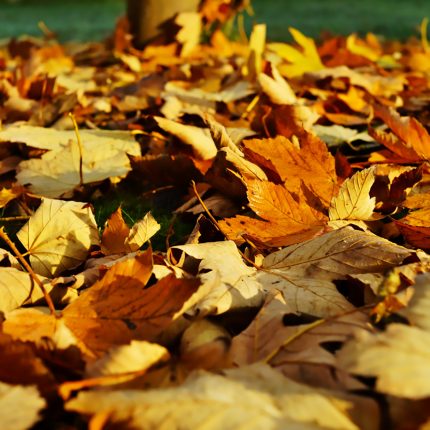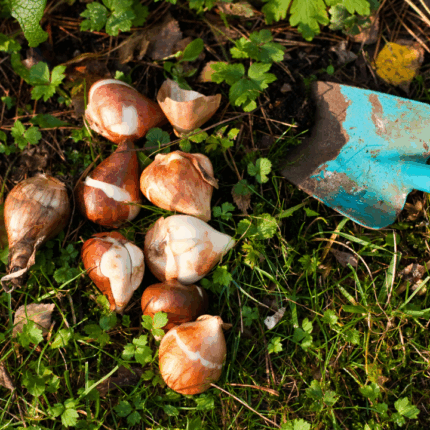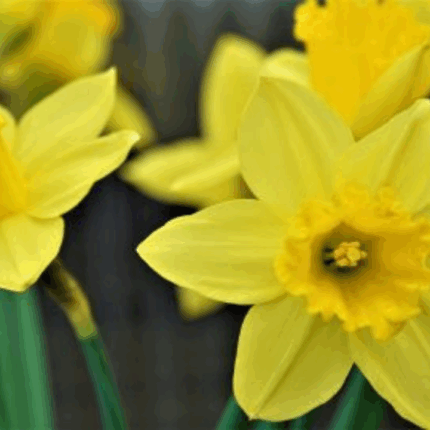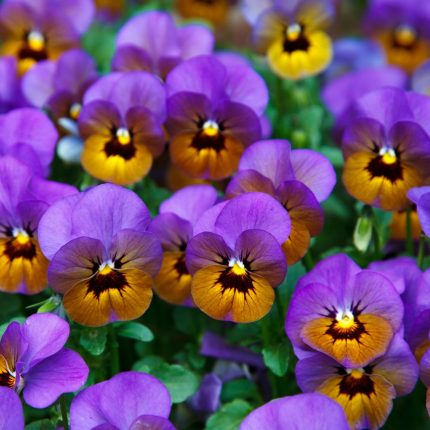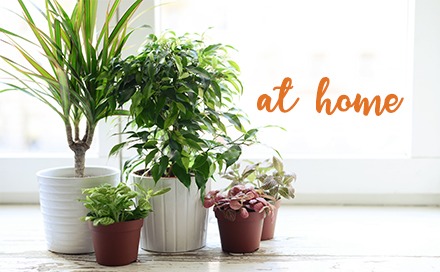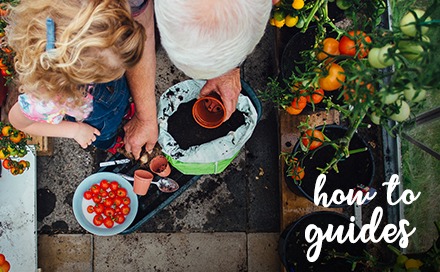Autumn Tulip Guide: Tips and Tricks for a Stunning Spring Display
Tulips are among the most iconic spring flowers, celebrated for their bold colours, elegant shapes, and ability to create instant impact in any garden. Synonymous with the vibrant flower fields of Amsterdam, tulips have long been a symbol of beauty, renewal, and the joy of spring. Planting tulip bulbs in autumn ensures a spectacular display of blooms from early to late spring. Whether you want to create dramatic borders, fill pots with colour, or naturalise them across your lawn, tulips are a gardener’s go-to flower. Here’s everything you need to know to make them thrive.
Why are tulips so popular with gardeners?
Tulips are beloved for their striking shapes, vivid colours, and sheer versatility. From the classic single blooms to extravagant parrot, fringed, and double varieties, tulips can suit nearly every garden style. Their upright stems and clean lines make them perfect for formal borders, while softer, mixed plantings create a natural, flowing effect in informal spaces.
Another reason tulips are so popular is their early-season cheer. As some of the first flowers to bloom after winter, they signal the arrival of spring and bring instant colour to otherwise bare garden beds. For gardeners, this makes them a reliable and rewarding choice. Planting a mix of early, mid, and late-blooming varieties extends the flowering period, keeping your garden vibrant from February through May.
Which tulip varieties should I choose?
Tulips come in a stunning variety of shapes, sizes, and colours, making them perfect for almost any garden style. From tall, elegant blooms to compact, dwarf varieties, there are tulips to suit borders, containers, naturalised areas, or dramatic garden displays. Single-flowered, double, parrot, and fringed types each offer a unique look, and by mixing early, mid, and late-season varieties, you can enjoy weeks of continuous colour throughout spring.
For gardeners in Ireland, Tirlán offers a carefully selected range of tulip bulbs to make creating these displays easy and enjoyable. Some of our favourites include:
- Darwin Hybrid Tulips – tall and sturdy with large, elegant blooms, ideal for creating bold statements and long-lasting displays.
- Triumph Tulips – mid-height tulips that are reliable, colourful, and perfect for borders or mass plantings.
- Dwarf Tulips – compact and charming, these are perfect for containers, rockeries, or the front of borders, providing bright pops of colour in smaller spaces.
If you can’t decide, mixed collections, such as our Mixed Variety Packs add a nice diversity to your garden.
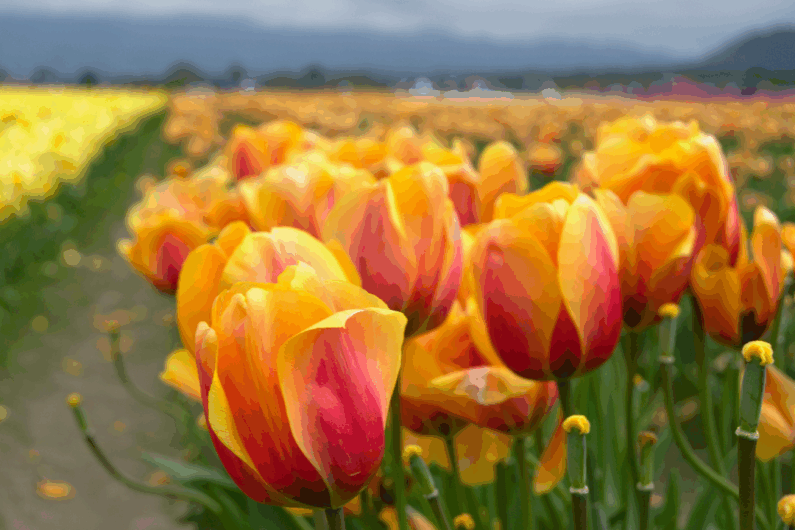
When and how should I plant tulips?
The ideal time to plant tulips is autumn, from September to November, before the first hard frost sets in. Planting at this time allows roots to establish during the cooler months, ensuring strong, healthy blooms in spring.
To plant tulips successfully:
- Depth: Plant bulbs two to three times their height (usually 10–15 cm deep). This protects them from frost and gives roots space to grow.
- Spacing: Leave 10–15 cm between bulbs to allow for growth and prevent overcrowding, which can lead to smaller or weaker flowers.
- Position: Tulips prefer a sunny, well-drained spot, as waterlogged soil can cause bulbs to rot.
Always plant bulbs with the pointed end facing upwards, cover with soil, and firm down gently. Give them a good watering after planting to help the soil settle and encourage root establishment. For best results, mix compost or well-rotted organic matter into the soil before planting.
How do I care for tulips after flowering?
Proper post-flowering care is essential for healthy bulbs and strong blooms in subsequent seasons:
- Deadhead spent flowers – snipping off faded blooms to prevent the plant from wasting energy on seed production.
- Leave the foliage – allow leaves to yellow and die back naturally. The leaves continue to photosynthesise, storing energy for next year’s blooms. Only remove the foliage once it has fully turned yellow.
- Fertilise lightly – apply a bulb feed or general fertiliser after flowering to restore nutrients.
Unlike daffodils, tulips often don’t reliably naturalise in the same spot for many years. For best results, many gardeners lift and store tulip bulbs after the foliage has died back and replant them in autumn. This ensures a spectacular, consistent display each year.
Can tulips be grown in pots?
Tulips grow beautifully in containers, making them perfect for patios, balconies, or smaller gardens. Choose dwarf or medium-height varieties to avoid toppling, and use a well-draining compost to prevent waterlogging.
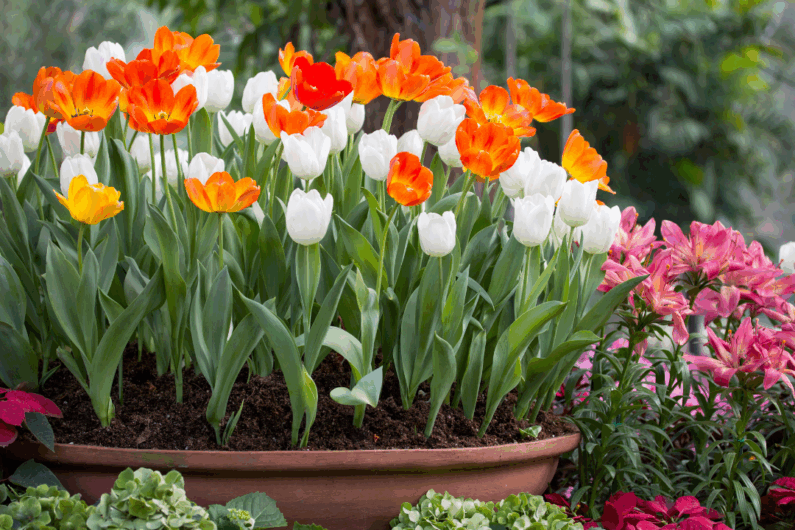
Plant bulbs close together but not touching, layering taller varieties behind shorter ones for a dynamic effect. You can also stagger different bloom times in a single pot to extend the flowering period. Place pots in a sunny, sheltered spot over autumn and winter to encourage root development, and move them if severe frost threatens.
After flowering, allow the foliage to die back naturally before removing. With the right care, tulips in pots will provide bright, early-season cheer year after year. Don’t forget to visit Tírlan’s Perfecting your Plant Pots guide for more information.
Tulips are a gardener’s favourite for good reason: they’re vibrant, versatile, and endlessly rewarding. Plant them this autumn to create a dramatic spring display, whether in borders, lawns, or containers. With a thoughtful mix of varieties, proper planting, and simple care, tulips will bring elegance, colour, and the unmistakable joy of spring to your garden.
For more information on autumn planting be sure to visit our autumn bulb planting guide and keep an eye on the Tírlan Country Life Blog for more tips and information.

